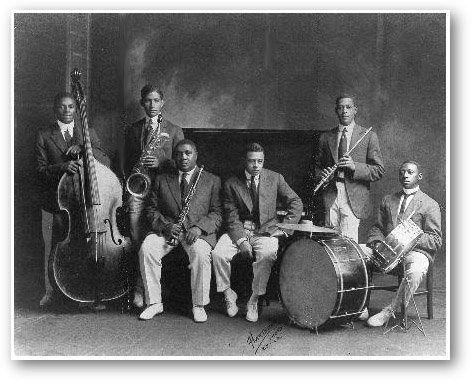The great Gatsby
%20(8).jpeg)
1) Explore https://jstor-mkbu.refread.com/ through MKBU eLibrary. Search JSTOR articles on 'Unreliable Narrator' or 'False Prophet of the American Dream' or any other topic of your choice. Review the articles and write about them.
Unreliable Narrator: Exploring Truth in Stories
The "unreliable narrator" is a storytelling trick where the person telling the story doesn't always tell the truth. They might lie or leave out important details, making readers unsure of what's real. It's like having a friend who exaggerates or forgets things when they tell a story. This technique makes stories more interesting and challenges readers to think about what's true and what's not.
False Prophet of the American Dream: A Warning about Chasing Money
This book is a warning about people who chase money and success too much, even if it means being dishonest or hurting others. It shows how someone might seem successful but be morally bankrupt inside. It's a reminder to think about what's really important in life, like being kind and true to yourself, instead of just trying to get rich.
The American Dream, as articulated by Roger L. Pearson in his article "Gatsby: False Prophet of the American Dream," is a belief deeply rooted in colonial writings. It suggests that every individual, regardless of their background, has the opportunity to pursue and achieve their chosen goals, whether they be political, monetary, or social. Pearson posits that Francis Scott Fitzgerald's portrayal of the American Dream in "The Great Gatsby" is a unique expression that lacks the traditional optimism and sense of fulfillment typically associated with it.
(i) Modern Reimagining: Rewrite a key scene from the novel in a modern setting, considering how themes and character motivations might change.
(ii) Symbolism Analysis: Identify and interpret key symbols in the novel, like the green light, the eyes of Doctor T.J. Eckleburg, and Gatsby's parties.


(iii) Historical Context Exploration: Research the historical and cultural context of the 1920s and analyze how it influences the plot, characters, and themes.
During the Prohibition era, bootleggers smuggled alcohol into the US, leading to the rise of organized crime. In "The Great Gatsby," Gatsby is involved in bootlegging with the help of Wolfsheim, earning easy money. Tom suspects Gatsby's illicit business, leading to conflict. The novel reaches a climax with rumors of Gatsby's murder. Speakeasies, hidden bars selling illegal alcohol, were common venues for such activities. Gatsby meets Wolfsheim in one such speakeasy, attempting to portray himself as honest.
Rise of Auto-mobile :
Cars became widespread in America in the early 1900s, thanks to innovators like Henry Ford. Big companies like Ford, General Motors, and Chrysler dominated the market. During World War II, these companies helped with military production. After the war, car manufacturing boomed worldwide. In "The Great Gatsby," cars symbolize both wealth and tragedy. Gatsby and Myrtle's deaths involve cars, highlighting how class differences affect consequences. Despite Gatsby's elite status, his humble origins contrast with Tom and Daisy's indifference to their wrongdoing.
6. Jazz Age :

"The Great Gatsby portrays the Jazz Age through the extravagant parties hosted by Gatsby, complete with live jazz music, which were characteristic of the era. Fitzgerald explores the pursuit of wealth and status, highlighting the materialistic values and the desire to ascend the social hierarchy."
(iv) Comparative Analysis: Compare and contrast "The Great Gatsby" with another novel, film, or piece of art that explores similar themes.
"Death of a Salesman"
One novel that can be compared and contrasted with "The Great Gatsby" is "Death of a Salesman" by Arthur Miller. Both works explore themes of the American Dream, disillusionment, and the pursuit of success in the early to mid-20th century America. Here's a
Exploration of the American Dream: In "The Great Gatsby," the American Dream is depicted as the pursuit of wealth, status, and the attainment of the ideal life. Gatsby's relentless pursuit of Daisy and his lavish parties symbolize his desire to achieve this dream.
In "Death of a Salesman," the American Dream is portrayed through Willy Loman's pursuit of success as a salesman. However, Willy's dream is ultimately shattered as he realizes that his efforts have not led to the success and happiness he envisioned.
Disillusionment and Reality:Both works highlight the theme of disillusionment as characters come to terms with the gap between their aspirations and reality.
In "The Great Gatsby," Gatsby's realization that his idealized version of Daisy and the life he desires may never be attainable reflects the theme of disillusionment.
In "Death of a Salesman," Willy Loman's gradual realization of his failures and the disintegration of his dreams mirrors the theme of disillusionment as he faces the harsh realities of his life.
Critique of Society:Both novels offer a critique of American society during their respective time periods.
"The Great Gatsby" critiques the excesses and moral decay of the Jazz Age, portraying the emptiness and superficiality of the wealthy elite.
"Death of a Salesman" critiques the American capitalist system and the pressure to achieve success at any cost, exposing the flaws and disillusionment inherent in the pursuit of the American Dream.
Characterization:While "The Great Gatsby" focuses on characters from the upper echelons of society like Gatsby, Daisy, and Tom, "Death of a Salesman" portrays the struggles of a middle-class family, particularly Willy Loman and his sons, Biff and Happy.
Both works delve deeply into the psyche of their characters, exploring their hopes, dreams, and inner conflicts.
In summary, while both "The Great Gatsby" and "Death of a Salesman" explore similar themes such as the American Dream and disillusionment, they differ in their portrayal of characters and social contexts, offering distinct perspectives on the challenges and complexities of life in America during the early to mid-20th century.
citation :
Martinez, Julia. "The Great Gatsby". Encyclopedia Britannica, 3 Feb. 2024, https://www.britannica.com/topic/The-Great-Gatsby. Accessed 23 February 2024.
OBERG, ARTHUR K. “‘Death of a Salesman’ and Arthur Miller’s Search for Style.” Criticism, vol. 9, no. 4, 1967, pp. 303–11. JSTOR, http://www.jstor.org/stable/23094172. Accessed 23 Feb. 2024.






Comments
Post a Comment